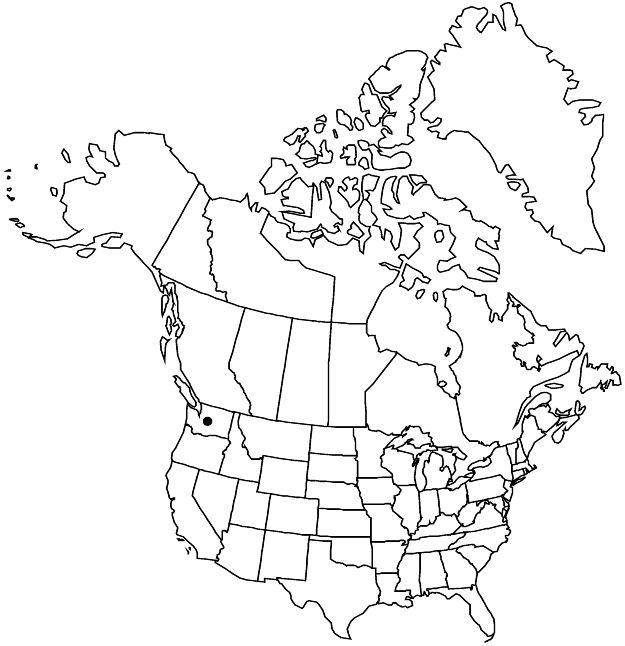Petrophytum cinerascens
in N. L. Britton et al., N. Amer. Fl. 22: 253. 1908.
Shrubs, 1–5 dm diam. Stems prostrate to decumbent, 2–8 cm, internodes (0.1–) 1 (–2) cm. Leaves: blade oblanceolate to obtuse, 1–2.5 (–3) × 0.2–0.4 (–0.5) cm, palmately 3-veined, venation sometimes visible through hairs, apex obtuse, abaxial surface minutely canescent to strigose or cinereous, adaxial sometimes glandular. Panicles sometimes branched, 2–8 (–15) × 1–5 cm, canescent to puberulent; bracts linear to oblanceolate, 5–10 mm, pilose. Pedicels 0.5–2 (–4) mm; bracteoles 1 (–2), extending from middle to apex of sepals, rarely beyond. Flowers 2–4 (–6) mm diam.; hypanthium 1 mm, canescent; sepals erect, ovate or lanceolate, 1–1.5 mm, margins ciliate, abaxial surface pubescent, glandular; petals oblanceolate or narrowly ovate, 1–2.5 mm, apex acute or rounded; stamens 20–25, lengths 1.3 times petals (1.3–1.5 times sepals); carpels (3–) 5 (–6), distinct. Follicles 2 mm.
Phenology: Flowering Jun–Aug.
Habitat: Crevices and ledges of outcrops, gneiss, schist, or granite
Elevation: 200–600 m
Discussion
Of conservation concern.
Petrophytum cinerascens grows in crevices and ledges of outcrops above the Columbia River where there is little or no soil; it was found only on rocky outcrops of gneiss, schist, and granite between Chelan and Wenatchee in central Washington (D. J. Moore et al. 1998); C. L. Hitchcock et al. (1955–1969, vol. 3) erroneously cited its habitat as basaltic cliffs, which is the more common rock type on the Columbia River plateau. Moore et al. evaluated the ability of P. cinerascens for photosynthetic acclimation to increased growth temperature and drought stress under short-term experimental conditions, and concluded that it could not acclimate to such changes; they suggested that this endemic species might be at risk of extinction if warmer, drier local conditions result from projected climate changes.
Selected References
None.
Lower Taxa
"dm" is not declared as a valid unit of measurement for this property.
